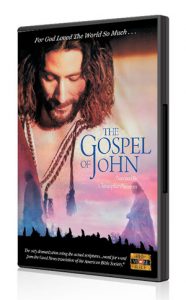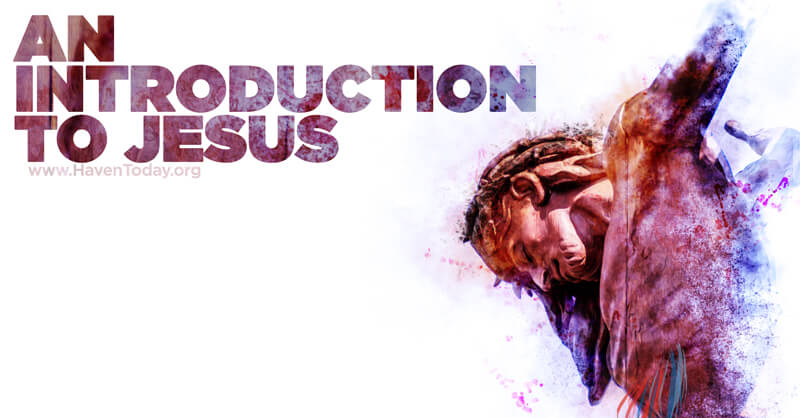“In the beginning was the Word, and the Word was with God, and the Word was God…”
This is how John introduces Jesus to the world. Unlike the other gospel writers, John writes an overture, or a prologue, that in the first eighteen verses perfectly captures who Jesus is and what his ministry means for us all.
These first few verses poetically show who and what the Word really is. Identified early in John’s Gospel, the Word is Jesus, who steps out of eternity into a dark and transient world to be the light that would overcome darkness and shine into all who believe.
In fact, my friend Darrell Johnson, professor at Regent College and senior pastor of First Baptist Church Vancouver, would recommend that every sentence in John is supposed to be read with these eighteen verses in mind.
Before beginning any passage in John, can I encourage you to start by reading the prologue first? Not only will this help you experience the Great Story the way the author originally intended, but you’ll also begin to see everything Jesus does in light of what he came to do.
Give it a try …
John 1:1-18
In the beginning was the Word, and the Word was with God, and the Word was God. He was with God in the beginning. Through him all things were made; without him nothing was made that has been made. In him was life, and that life was the light of all mankind. The light shines in the darkness, and the darkness has not overcome it.
There was a man sent from God whose name was John. He came as a witness to testify concerning that light, so that through him all might believe. He himself was not the light; he came only as a witness to the light.
The true light that gives light to everyone was coming into the world. He was in the world, and though the world was made through him, the world did not recognize him. He came to that which was his own, but his own did not receive him. Yet to all who did receive him, to those who believed in his name, he gave the right to become children of God— children born not of natural descent, nor of human decision or a husband’s will, but born of God.
The Word became flesh and made his dwelling among us. We have seen his glory, the glory of the one and only Son, who came from the Father, full of grace and truth.
(John testified concerning him. He cried out, saying, “This is the one I spoke about when I said, ‘He who comes after me has surpassed me because he was before me.’”) Out of his fullness we have all received grace in place of grace already given. For the law was given through Moses; grace and truth came through Jesus Christ. No one has ever seen God, but the one and only Son, who is himself God and is in closest relationship with the Father, has made him known.
When you look closer, you’ll see that there’s something more going on than just sentences and paragraphs. John is using what is known as a “chiastic structure,” which was common in Hebrew literature. Basically, John is using each sentence for a very specific purpose that ultimately highlights the importance of what he’s describing. Take a look:
A. The Word as theos with God (1:1-2)
B. Creation came through the Word (1:3
C. We have received life from the Word (1:4-5)
D. John (the Baptist) was sent to testify (1:6-8)
E. Incarnation and the response of the world (1:9-10)
F. The Word and his own (Israel) (1:11)
G. Those who accepted the Word (1:12a)
H. He gave authority to become children of God (1:12b)
G. Those who believed the Word (1:12c)
F. The Word and his own (believers) (1:13)
E. Incarnation and the response of the community (1:14)
D. John’s testimony (1:15)
C. We have received grace from the Word (1:16)
B. Grace and truth came through the Word (1:17)
A. The Word as theos with God (1:18)
These opening paragraphs are theologically dense, but, when told in the context of a story, they act as a springboard to new life in Christ. Everything about it rings true. By itself the prologue can introduce Jesus, but the greatest insight comes when you pair these opening words with verses like the ones below:
1:29 – The next day John saw Jesus coming toward him and said, “Behold, the Lamb of God, who takes away the sin of the world!
3:17 – For God did not send his Son into the world to condemn the world, but to save the world through him.
5:24 – I tell you the truth, whoever hears my word and believes him who sent me has eternal life and will not be condemned; he has crossed over from death to life.
10:10 – The thief comes only to steal and kill and destroy; I have come that they may have life, and have it to the full.
16:33 – I have said these things to you, that in me you may have peace. In the world you will have tribulation. But take heart; I have overcome the world.”
On their own, these verses pack a powerful punch, but the meaning is elevated even more in the context of John’s introduction. In this way, it’s important to remember that everything Jesus did on earth had a divine purpose. John isn’t simply introducing a man or a priest or a prophet … this is the Messiah.
“Never did a man speak the way this man speaks” John 7:46
Now that you’re more acquainted with the introduction of Jesus at the beginning of John’s Gospel, you won’t want to stop there … you need to read the book.
A great way to get started would be to take part in “The John Challenge.” At the beginning of 2018, we began challenging our listeners to take a 21-Day journey through John by reading a chapter a day. With most New Year’s resolutions falling by the wayside, I believe this challenge is an approachable, yet meaningful, way to begin the year.
And the best part is that it’s never too late to start! I’m confident that you’ll not only be blessed to learn more about Jesus through the eyes of the youngest disciple, but you will also grow in your walk with God. Find out more!
Both Ezekiel and Revelation mention four living creatures that hold great significance: a lion, an ox, a man, and an eagle. The church father, Jerome, thought these referred to Matthew, Mark, Luke and John. In particular, he thought John was the eagle because this creature—according to ancient belief—could look directly at the sun.
That’s what John’s Gospel invites us to do in each passage. He invites us to “come and see.” John doesn’t want us to look at the actual sun, but the Son of God. And yet, in the same way, we can’t look directly at the sun without being blinded, which is why the Word became flesh and dwelt among us.
About the Author
As the leader of the Haven Ministries, Charles Morris is always thinking of ways to lead Christians and non-Christians to Christ—hence the familiar slogan, “Telling the great story … it’s all about Jesus.” A former secular journalist, Charles has worked for United Press International, and as a press secretary for two former U.S. senators. He and his wife, Janet, have authored several books, including Missing Jesus. Charles’ latest book is Fleeing ISIS, Finding Jesus: The Real Story of God At Work.
Most of the thoughts above are taken from broadcasts of Haven Today. Corum Hughes serves as the editor of this blog and coordinator for Haven’s social media content. A graduate of Moody Bible Institute, Corum lives in Boise, ID with his wife Molly.
 The Gospel of John (DVD)
The Gospel of John (DVD)
Walk with Jesus every step of the way as he lives out his earthly ministry! Featuring word-for-word dialogue from the Good News Bible, this critically acclaimed movie brings John’s Gospel vividly to life. Starring Henry Ian Cusick as Jesus and narrated by Christopher Plummer. (PG-13). Approx. 3 hours.



1 Comment
Thank you for the encouragement your offering on John’s gospel provides.
The “challenge” to read through this gospel is a great reminder to look once again at our Wonderful Savior – our “Blessed Assurance” of “…everlasting life…” (3:36) Halleluyah!
Shalom!